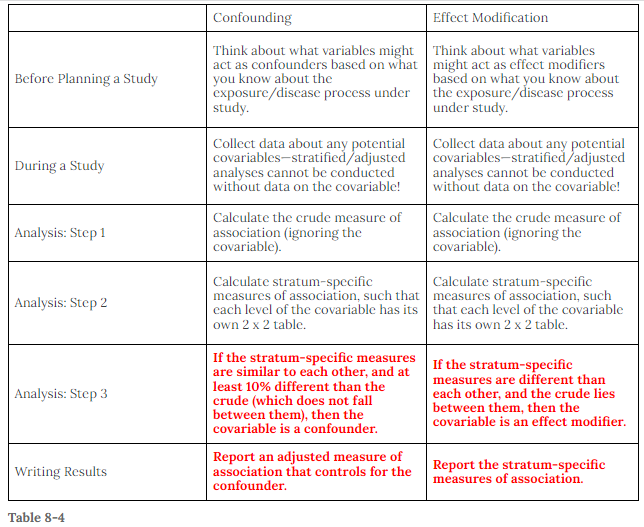Epidemiology - including Biostatistics and Infectious Diseases
PH717 Module 11 - Confounding and Effect Measure Modification
Authors:
Wayne W. LaMorte, MD, PhD, MPH, Professor of Epidemiology
Lisa Sullivan, PhD, Professor of Biostatistics
Boston University School of Publich Health
Confounding occurs when the relationship between an exposure (such as a risk factor or treatment) and a disease or outcome is distorted by the presence of another factor (called a confounder). Confounders can make it difficult to determine the true relationship between the exposure and the outcome, because they can create an association that is not actually present.
For example, let's say you are studying the relationship between smoking and lung cancer. If you only compare smokers to non-smokers, you may find that smokers are more likely to develop lung cancer than non-smokers. However, this relationship could be confounded by other factors, such as age and diet. If smokers tend to be younger and eat a less healthy diet than non-smokers, these factors could be contributing to their increased risk of lung cancer. In this case, age and diet would be confounders. (Text generated by #ChatGPT)
Measures of Association
8 Effect Modification
Foundations of Epidemiology by Marit Bovbjerg
https://open.oregonstate.education/epidemiology/chapter/effect-modification/
With confounding, you’re initially getting the wrong answer because the confounder is not distributed evenly between your groups. This distorts the measure of association that you calculate (remember: having bigger feet is associated with reading speed only because of confounding by grade level). So instead you need to recalculate the measure of association, this time adjusting for the confounder.
With effect modification, you’re also initially getting the wrong answer, but this time it’s because your sample contains at least 2 subgroups in which the exposure/disease association is different. In this case, you need to permanently separate those subgroups and report results (which may or may not be confounded by still other covariables) separately for each stratum: in this case, men who sleep less have higher GPAs than men who sleep more, but at the same time, women who sleep more have higher GPAs than women who sleep less.



Comments
Post a Comment